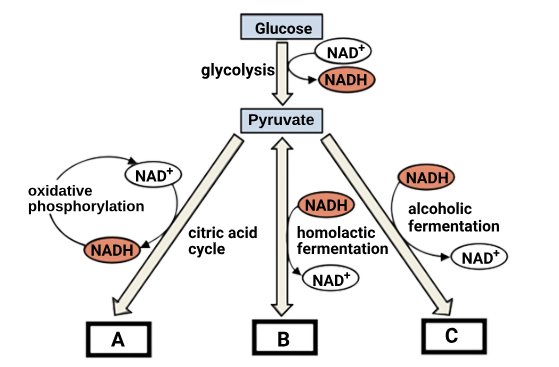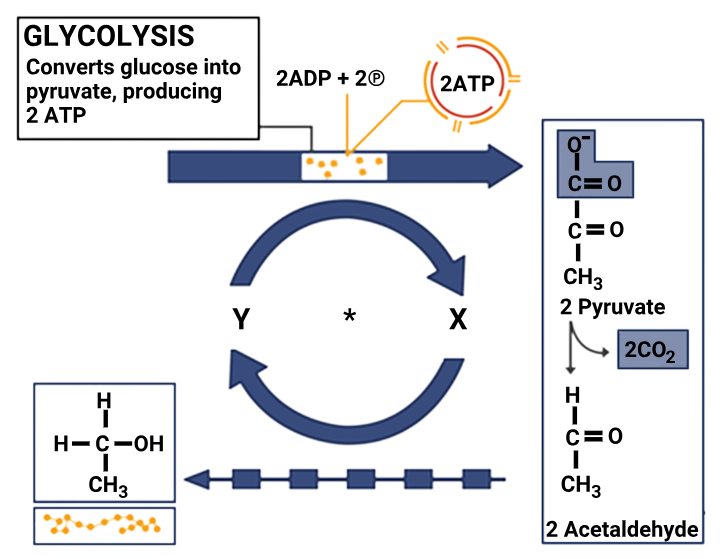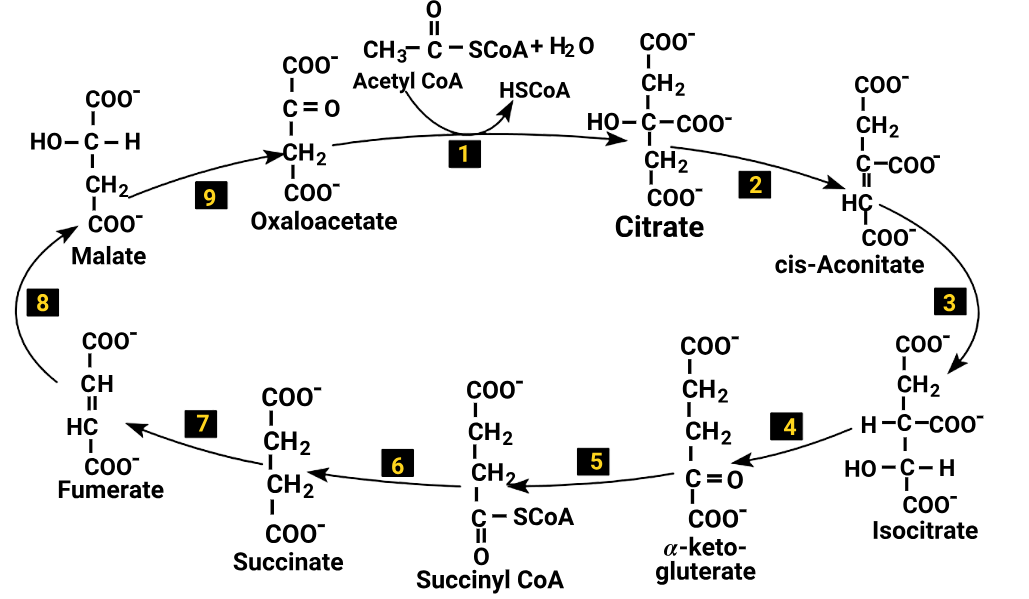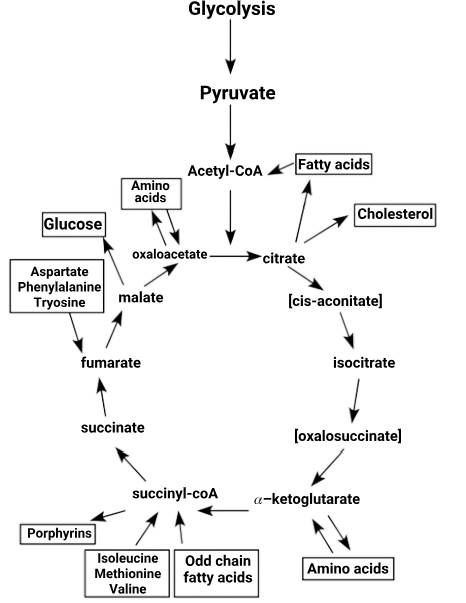Respiration in Plants NCERT
Quiz Summary
0 of 45 Questions completed
Questions:
Information
You have already completed the quiz before. Hence you can not start it again.
Quiz is loading…
You must sign in or sign up to start the quiz.
You must first complete the following:
Results
Results
0 of 45 Questions answered correctly
Your time:
Time has elapsed
You have reached 0 of 0 point(s), (0)
Earned Point(s): 0 of 0, (0)
0 Essay(s) Pending (Possible Point(s): 0)
Categories
- Not categorized 0%
- 1
- 2
- 3
- 4
- 5
- 6
- 7
- 8
- 9
- 10
- 11
- 12
- 13
- 14
- 15
- 16
- 17
- 18
- 19
- 20
- 21
- 22
- 23
- 24
- 25
- 26
- 27
- 28
- 29
- 30
- 31
- 32
- 33
- 34
- 35
- 36
- 37
- 38
- 39
- 40
- 41
- 42
- 43
- 44
- 45
- Current
- Review
- Answered
- Correct
- Incorrect
-
Question 1 of 45
1. Question
1 point(s)In Section 12.1, it is written that most cells of a plant have at least a part of their surface in contact with air. The arguments in favor of this statement include all except:
CorrectIncorrectHint
(b)
-
Flattened leaves
➤ They maximize surface area for contact with air and light — supports the statement. ✅ -
Closely packed parenchyma in most regions
➤ This goes against the idea of cells having air contact. Closely packed cells reduce intercellular spaces, which hinders air diffusion. So, this does not support the idea that “most cells have contact with air.” ❌ -
Presence of lenticels
➤ These are structures that allow air to reach internal tissues in stems — supports the idea. ✅ -
Mostly dead cells in the interior
➤ Dead cells (like xylem) don’t actively need gas exchange, but their presence doesn’t affect whether living cells are in contact with air. It’s a neutral or supportive point — not directly opposing. ✅/neutral
-
Question 2 of 45
2. Question
1 point(s)Consider the two statements:
I: ATP is used as the energy currency of the cell.
II: ATP molecule has two high energy bonds.CorrectIncorrectHint
(b)
⚠️ Why Statement II does not fully explain Statement I:
Saying “ATP has two high-energy bonds” is only part of the explanation.
To truly explain why ATP is the energy currency, we must understand:
-
That breaking those bonds releases a significant amount of free energy (about −30.5 kJ/mol).
-
That this energy is used to power endergonic (energy-consuming) processes in the cell.
-
That ATP hydrolysis is reversible and well-coupled with other reactions.
-
That ATP is stable in solution but reactive enough to release energy when needed.
-
Question 3 of 45
3. Question
1 point(s)Which of the following would be correct regarding the comparison of fermentation and aerobic respiration?
\(
\begin{array}{|l|l|l|}
\hline & \text { Fermentation } & \text { Aerobic respiration } \\
\hline \text { I: } & \text { Partial breakdown of glucose } & \text { Complete breakdown of glucose } \\
\hline \text { II: } & \begin{array}{l}
\text { Net gain of only two molecules of ATP } \\
\text { beginning with one molecule of glucose }
\end{array} & \begin{array}{l}
\text { Net gain of many more molecules of ATP } \\
\text { beginning with one molecule of glucose }
\end{array} \\
\hline \text { III: } & \text { NADH is oxidised to NAD }{ }^{+} \text {slowly } & \text { NADH is oxidised to NAD }{ }^{+} \text {vigorously } \\
\hline
\end{array}
\)\(
\begin{array}{|l|l|l|l|}
\hline 1 . & \text { Only I and II } & 2 . & \text { Only I and III } \\
\hline 3 . & \text { Only II and III } & 4 . & \text { I, II and III } \\
\hline
\end{array}
\)CorrectIncorrectHint
(d)
-
Question 4 of 45
4. Question
1 point(s)Cellular respiration includes:
I: Transport of gases from the respiratory surface to the cells
II. Breakdown of food material within the cell to release energy
III. Trapping of energy released during the breakdown of food material within the cell for synthesis of ATP\(
\begin{array}{|l|l|}
\hline \text { 1. Only I and II } & \text { 2. Only I and III } \\
\hline \text { 3. Only II and III } & \text { 4. I, II and III } \\
\hline
\end{array}
\)CorrectIncorrectHint
(c)
I: Transport of gases from the respiratory surface to the cells
❌ Incorrect
-
This is not part of cellular respiration.
-
It is part of external respiration or the respiratory system’s function, not the cell’s internal energy production.
-
Transport of gases (O₂ and CO₂) through blood or other fluids is a supporting process, but not a step in cellular respiration itself.
-
Question 5 of 45
5. Question
1 point(s)Pyruvate, the end product of glycolysis, has varied fates depending on the different conditions as shown below. The end products A,B and C are:

\[
\begin{array}{|c|c|c|c|}
\hline
& \text{A} & \text{B} & \text{C} \\
\hline
1. & \text{Carbon dioxide and Water} & \text{Lactate} & \text{Ethanol and Carbon dioxide} \\
\hline
2. & \text{Only Carbon dioxide} & \text{Lactate and Carbon dioxide} & \text{Ethanol and Carbon dioxide} \\
\hline
3. & \text{Carbon dioxide and Water} & \text{Lactate and Carbon dioxide} & \text{Ethanol} \\
\hline
4. & \text{Ethanol and Carbon dioxide} & \text{Lactate} & \text{Carbon dioxide and Water} \\
\hline
\end{array}
\]CorrectIncorrectHint
(b)
-
Question 6 of 45
6. Question
1 point(s)Consider the two statements:
Statement I: Inside a cell, the glucose molecule is oxidised not in one step but in several small steps.
Statement II: Some steps will be just large enough such that energy liberated can be coupled to ATP synthesis.CorrectIncorrectHint
(a)
-
Question 7 of 45
7. Question
1 point(s)Intext question of Section 12.2, NCERT : How many ATP molecules are directly synthesized in glycolytic pathway from one glucose molecule?
CorrectIncorrectHint
(b)
-
Question 8 of 45
8. Question
1 point(s)Again an intext question from Section 12.2, NCERT. What is the metabolic fate of pyruvate?
CorrectIncorrectHint
- Option 1: It is the end product of glycolytic pathway
🔴 Incorrect — This is a true statement, but it does not answer the question being asked.
-
The question is asking about the fate of pyruvate (i.e., what happens to it next, not where it comes from).
-
Saying pyruvate is the end product of glycolysis is background, not an answer to its metabolic fate
- Option 2: It is reduced to acetyl CoA in the presence of oxygen🔴 Incorrect
- Pyruvate is not reduced to acetyl CoA — it is oxidatively decarboxylated.
- In this reaction:
- Pyruvate loses a carbon as CO₂,
- NAD⁺ is reduced (not pyruvate),
- Pyruvate itself is oxidized to form acetyl CoA.
-
Option 4: It is decarboxylated in the cytosol
🔴 Incorrect
- Pyruvate is decarboxylated to form acetyl CoA, but this step occurs in the mitochondria, not in the cytosol.
- The decarboxylation reaction is catalyzed by the pyruvate dehydrogenase complex, located in the mitochondrial matrix.
❌ So this statement is wrong in location.
-
Question 9 of 45
9. Question
1 point(s)In glycolysis, ATP is synthesised
CorrectIncorrectHint
(a)
-
Question 10 of 45
10. Question
1 point(s)What will be true for the metabolic reaction shown in the given figure?

I. It shows hydrolysis of sucrose, a disaccharide, into two monosaccharides, a glucose and a fructose molecule. .
II. The enzyme that is capable of catalysing this reaction is invertase.CorrectIncorrectHint
(c)
-
Question 11 of 45
11. Question
1 point(s)In glycolysis, \(
\mathrm{NAD}^{+} \) is reduced to \( \mathrm{NADH}+\mathrm{H}^{+}
\):CorrectIncorrectHint
(b)
-
Question 12 of 45
12. Question
1 point(s)Given below is the schematic representation of alcohol fermentation. Study the diagram and select the correct statements that follow:

I: Yeasts perform this metabolic conversion when growing in the absence of oxygen.
II: The metabolic conversion of pyruvate into acetaldeyhde is catalysed by the enzyme pyruvate dehydrogenase.
III: The metabolic conversion of acetaldehyde into ethanol is catalysed by the enzyme alcohol dehydrogenaseCorrectIncorrectHint
(d)
Statement II is incorrect
The metabolic conversion of pyruvate into acetaldehyde is catalysed by the enzyme pyruvate dehydrogenase.”
is ❌ incorrect, and here’s why:-
❌ Incorrect part: the enzyme name
-
The conversion of pyruvate to acetaldehyde (a step in alcoholic fermentation) is not catalyzed by pyruvate dehydrogenase.
-
Instead, it is catalyzed by:
✅ Enzyme: Pyruvate decarboxylase
-
This enzyme removes a CO₂ group from pyruvate, forming acetaldehyde.
-
This occurs in anaerobic conditions, e.g., in yeast during alcoholic fermentation.
❌ Incorrect part: the enzyme name
-
The conversion of pyruvate to acetaldehyde (a step in alcoholic fermentation) is not catalyzed by pyruvate dehydrogenase.
-
Instead, it is catalyzed by:
✅ Enzyme: Pyruvate decarboxylase
-
This enzyme removes a CO₂ group from pyruvate, forming acetaldehyde.
-
This occurs in anaerobic conditions, e.g., in yeast during alcoholic fermentation.
-
Question 13 of 45
13. Question
1 point(s)Consider the given statements:
Statement I: In alcohol fermentation in yeast, pyruvic acid decarboxylase and alcohol dehydrogenase convert pyruvic acid to carbon dioxide and ethanol.
Statement II: In lactic acid fermentation, lactate dehydrogenase reduces pyruvic acid to lactic acid and carbon dioxide in muscle cells during exercise.CorrectIncorrectHint
(c)
Statement II:
In lactic acid fermentation, lactate dehydrogenase reduces pyruvic acid to lactic acid and carbon dioxide in muscle cells during exercise.
❌ Incorrect.-
In lactic acid fermentation, pyruvic acid is converted to lactic acid by lactate dehydrogenase.
-
However, no carbon dioxide is released in this process.
-
Question 14 of 45
14. Question
1 point(s)Refer Section 12.4.1, NCERT. The continued oxidation of acetyl CoA via the TCA cycle requires the continued replenishment of:
I. Oxaloacetic acid
II. \( \mathrm{NAD}^{+}
\)
III. FADCorrectIncorrectHint
(d)
All are correct
-
Question 15 of 45
15. Question
1 point(s)At how many points in the TCA cycle is \( \mathrm{NAD}^{+} \) reduced to \( \mathrm{NADH}+\mathrm{H}^{+} \)?
CorrectIncorrectHint
(b)
-
Question 16 of 45
16. Question
1 point(s)During the conversion of succinyl CoA to succinic acid in TCA cycle:
CorrectIncorrectHint
(d)
-
Question 17 of 45
17. Question
1 point(s)The electron transport system in mitochondria is located in the:
CorrectIncorrectHint
(a)
-
Question 18 of 45
18. Question
1 point(s)Ubiquinone receives reducing equivalents via:
I. Complex I
II. Complex II
III. Complex IIICorrectIncorrectHint
(b)
-
Question 19 of 45
19. Question
1 point(s)Given below is the schematic representation of the reactions in Krebs’ Citric Acid Cycle. Identify the correct statements:-

I. Oxidative decarboxylation steps are Step 4 and Step 5.
II. The reducing power ‘NADH’ is generated at Step 4, Step 5 and Step 9.
III. \( \mathrm{FADH}_2 \) is generated at Step 7 .CorrectIncorrectHint
(d)
-
Question 20 of 45
20. Question
1 point(s)Cytochrome c is found:
CorrectIncorrectHint
(a)
-
Question 21 of 45
21. Question
1 point(s)The number of ATP molecules synthesized from oxidation of one molecule of NADH and one molecule of \( \mathrm{FADH}_2 \) are respectively:
CorrectIncorrectHint
(a)
-
Question 22 of 45
22. Question
1 point(s)Oxygen drives the process of ATP production via ETS. The best explanation for this would be that oxygen:
CorrectIncorrectHint
(d)
-
Question 23 of 45
23. Question
1 point(s)Pyruvic acid, the key product of glycolysis can have many metabolic fates.
Under aerobic condition, it formsCorrectIncorrect -
Question 24 of 45
24. Question
1 point(s)The stage of cellular respiration that directly involves oxygen is:
CorrectIncorrectHint
(b)
-
Question 25 of 45
25. Question
1 point(s)What process in aerobic respiration generates maximum ATP?
CorrectIncorrectHint
(b)
-
Question 26 of 45
26. Question
1 point(s)In aerobic respiration, oxygen acts as:
I. Terminal electron acceptor
II. Terminal proton acceptorCorrectIncorrectHint
(c)
-
Question 27 of 45
27. Question
1 point(s)\( \mathrm{FADH}_2 \) is produced in:-
CorrectIncorrectHint
(c)
-
Question 28 of 45
28. Question
1 point(s)Given below is the schematic representation of the electron transport chain in mitochondria. Identify the correct statement:

\[
\begin{array}{|l|l|}
\hline
1. & (1) \text{ is NADH; } 4 \text{ is FAD; } 6 \text{ is fumarate; } 8 \text{ is oxygen; and } 10 \text{ is ATP} \\
\hline
2. & (2) \text{ is } \mathrm{NAD}^{+};\ 4 \text{ is } \mathrm{FADH}_2;\ 6 \text{ is succinate; } 8 \text{ is oxygen; and } 10 \text{ is ADP} \\
\hline
3. & (1) \text{ is NADH; } 4 \text{ is fumarate; } 6 \text{ is FAD; } 8 \text{ is water; and } 10 \text{ is ATP} \\
\hline
4. & (2) \text{ is } \mathrm{NAD}^{+};\ 3 \text{ is succinate; } 6 \text{ is FAD; } 8 \text{ is oxygen; and } 10 \text{ is ADP} \\
\hline
\end{array}
\]CorrectIncorrectHint
(c)
-
Question 29 of 45
29. Question
1 point(s)Krebs cycle is also called as:
CorrectIncorrectHint
(d)
-
Question 30 of 45
30. Question
1 point(s)The components of the mitochondrial electron transport chain are located:
CorrectIncorrectHint
(c)
-
Question 31 of 45
31. Question
1 point(s)Identity the incorrectly matched pair:-
\(
\begin{array}{|l|l|l|}
\hline & \text { Component of ETC } & \text { Name } \\
\hline \text { 1. } & \text { Complex I } & \text { NADH dehydrogenase } \\
\hline \text { 2. } & \text { Complex II } & \text { Succinate dehydrogenase } \\
\hline \text { 3. } & \text { Complex III } & \text { Cytochrome } \mathrm{b}_6 \mathrm{f} \text { complex } \\
\hline \text { 4. } & \text { Complex IV } & \text { Cytochrome c oxidase } \\
\hline
\end{array}
\)CorrectIncorrect -
Question 32 of 45
32. Question
1 point(s)During aerobic respiration, the complete oxidation of pyruvate by the stepwise removal of all the hydrogen atoms, leaving three molecules of carbon dioxide, takes place in the:
CorrectIncorrectHint
(b)
-
Question 33 of 45
33. Question
1 point(s)In the Krebs cycle, two successive steps of decarboxylation result in the formation of:
CorrectIncorrectHint
(c)
-
Question 34 of 45
34. Question
1 point(s)After the two molecules of pyruvate, produced at the end of glycolysis from one molecule of glucose, enter the mitochondrial matrix and till the Krebs cycle is complete, which of the following will not be a correct number of the corresponding molecule produced?
CorrectIncorrectHint
(d)
❌ Four molecules of CO₂ → Incorrect, because six CO₂ are released in total (2 from link + 4 from Krebs)
-
Question 35 of 45
35. Question
1 point(s)The given diagram shows an important component of the mitochondrial electron transport chain. Identify A, B and C :

\(
\begin{array}{|l|l|l|l|}
\hline & \text { A } & \text { B } & \text { C } \\
\hline \text { 1. } & \text { Complex I } & \text { FMN } & \text { Fe-S } \\
\hline \text { 2. } & \text { Complex I } & \text { Fe-S } & \text { FMN } \\
\hline \text { 3. } & \text { Complex II } & \text { FMN } & \text { Fe-S } \\
\hline \text { 4. } & \text { Complex II } & \text { Fe-S } & \text { FMN } \\
\hline
\end{array}
\)CorrectIncorrectHint
(b)
-
Question 36 of 45
36. Question
1 point(s)Which complex in the mitochondrial electron transport system contains cytochromes a and \( a_3 \) and two copper centres?
CorrectIncorrectHint
(d)
-
Question 37 of 45
37. Question
1 point(s)Consider the following statements regarding ATP synthase, complex V of the mitochondrial electron transport system:
I. The \( \mathrm{F}_1 \) headpiece is peripheral membrane protein complex and contains the site for the synthesis of ATP from ADP and inorganic phosphate.
II. The \( \mathrm{F}_0 \) is an integral membrane protein complex that forms the channel through which protons cross the inner membrane.
III. For each ATP produced, \(4 \mathrm{H}^{+}\)passes through \(\mathrm{F}_0\) from the intermembrane space to the matrix down electrochemical proton gradient.CorrectIncorrectHint
(c)
All are correct
-
Question 38 of 45
38. Question
1 point(s)Identify the incorrectly matched pair:
\(
\begin{array}{|l|l|l|}
\hline & \text { Respiratory Complex } & \text { Pathway for electron transport } \\
\hline \text { 1. } & \text { NADH dehydrogenase } & \text { NADH – FMN – [Fe-S] – Q } \\
\hline \text { 2. } & \begin{array}{l}
\text { Succinic } \\
\text { dehydrogenase }
\end{array} & \mathrm{FADH}_2-\mathrm{FMN}-\mathrm{Q} \\
\hline \text { 3. } & \text { Cytochrome bc }{ }_1 & \mathrm{Cyt} \mathrm{~b}-[\mathrm{Fe}-\mathrm{S}]-\mathrm{Cyt} \mathrm{c}_1 \\
\hline \text { 4. } & \text { Cytochrome c oxidase } & \mathrm{Cu}_{\mathrm{A}}-\mathrm{Cyt} \mathrm{a}-\mathrm{Cyt} \mathrm{a}_3-\mathrm{Cu}_{\mathrm{B}} \\
\hline
\end{array}
\)CorrectIncorrectHint
(b)
orrect Pathway:
FADH₂ → [Fe-S] → Q
❌ Your version:FADH₂ - FMN - Q
➡ Incorrect, because FMN is not involved in Complex II.
Complex II uses FAD (bound) and Fe-S centers, but not FMN. -
Question 39 of 45
39. Question
1 point(s)According to NCERT [Section 12.5], what is the number of ATP molecules that can be regarded as a net gain during aerobic respiration of one molecule of glucose?
CorrectIncorrect -
Question 40 of 45
40. Question
1 point(s)During aerobic respiration of one molecule of glucose, there can be a net gain of:
CorrectIncorrectHint
(c)
-
Question 41 of 45
41. Question
1 point(s)Consider the two statements:
Statement I: The respiratory pathway is better regarded as an amphibolic pathway rather than only a catabolic pathway.
Statement II: The respiratory pathway is involved in both anabolism and catabolism.CorrectIncorrectHint
(a)
-
Question 42 of 45
42. Question
1 point(s)Assertion: \( \text { ATP: NADH }+\mathrm{H}^{+} \) and \( \text { ATP: FADH }_2 \) ratios during the oxidative phosphorylation appear to be not 3 and 2 , but 2.5 and 1.5 respectively.
Reason: ATP synthase produces \( 1 \mathrm{ATP} / 3 \mathrm{H}^{+} \).CorrectIncorrectHint
(b)
Not entirely — because:
-
The change in ATP yield (2.5/1.5 instead of 3/2) is not explained solely by the 3 H⁺/ATP claim.
-
It results from a more detailed analysis:
-
Total H⁺ pumped per NADH/FADH₂,
-
The actual number of protons required per ATP (including phosphate and ADP transport),
-
The stoichiometry of ATP synthase rotation.
-
-
Question 43 of 45
43. Question
1 point(s)Consider the following statements:
I. If fatty acids were to be respired they would enter the respiratory pathway as acetyl CoA.
II. Glycerol enters the respiratory pathway after being converted to PGAL.
III. Amino acids enter the respiratory pathway at some stage within the Krebs cycle but never as pyruvate or acetyl CoA.CorrectIncorrectHint
(b)
🔹 Statement III:
“Amino acids enter the respiratory pathway at some stage within the Krebs cycle but never as pyruvate or acetyl CoA.”
❌ Incorrect
Different amino acids can enter at multiple points:-
Some are converted to pyruvate.
-
Some to acetyl CoA.
-
Others enter directly at various Krebs cycle intermediates (e.g., α-ketoglutarate, oxaloacetate).
Thus, it’s wrong to say “never as pyruvate or acetyl CoA.”
-
Question 44 of 45
44. Question
1 point(s)The correct descending order of the RQ value, when carbohydrates, proteins and fats are used as respiratory substrate would be:
CorrectIncorrect -
Question 45 of 45
45. Question
1 point(s)Study the metabolic pathway given below and select the correct statements from the statements given:

I: It shows that the Krebs cycle is an amphibolic pathway.
II: An amphibolic pathway is a type of catabolic pathway that is involved in the production of ATP.CorrectIncorrectHint
(a)
🔹 Statement II: “An amphibolic pathway is a type of catabolic pathway that is involved in the production of ATP.”
❌ Incorrect
-
An amphibolic pathway is not just catabolic.
-
It is a dual-function pathway — it is both catabolic and anabolic, depending on the cell’s needs.
-
Defining it only as a “type of catabolic pathway” is misleading/incomplete.